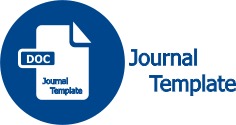Pengembangan Model Instrumen Pengukuran Customer Interface 8C
DOI:
https://doi.org/10.30651/blc.v15i01.1258Abstrak
ABSTRACT
This study aims to develop a measurement model of customer interface or display interface using 8C that is context, content, community, customization, communication, connection, commerce and collaboration on the website or website of e-commerce digital industry in West Kalimantan especially from visitor perspective. The customer interface measurement model will be developed to overcome the limitations of the commonly used model of webqual. Appropriate measurement models will greatly assist in improving the look of the website interface with the e-commerce platform. Literature studies and interviews will be used to construct measurement models. Studies are conducted on literature on web quality measurement models, e-business and e-commerce concepts, and customer interface factors in e-commerce web. Interviews were conducted on ecommerce web users. Respondents were chosen by using purposive sampling technique.
The result of the research is a measurement model of e-commerce web quality using customer interface factors as dimensions. The attributes identified for measuring the quality of e-commerce web are 16 items grouped into 8 (eight) customer interface dimensions. The development of e-commerce website measurement model is constructed into the website www.cicommerce.id comprehensively and commercially to map the position of e-commerce web customer interface.
Â
ABSTRAKÂ
Penelitian ini bertujuan untuk mengembangkan model pengukuran customer interface atau tampilan antar muka menggunakan 8C yaitu context, content, community, customization, communication, connection, commerce dan collaboration pada website atau situs e-commerce industry digital yang ada di Kalbar khususnya dari persepektif pengunjung. Model pengukuran customer interface akan dikembangkan untuk mengatasi keterbatasan-keterbatasan dari model yang umum digunakan yaitu webqual. Model pengukuran yang sesuai akan sangat membantu dalam meningkatkan tampilan antar muka website dengan platform e-commerce. Studi literatur dan wawancara akan digunakan untuk membangun model pengukuran. Studi dilakukan pada literatur-literatur mengenai model pengukuran kualitas web, konsep e-business dan e-commerce, serta faktor-faktor customer interface dalam web e-commerce. Wawancara dilakukan terhadap pengguna web e-commerce. Responden dipilih dengan menggunakan teknik purposive sampling.
Hasil penelitian adalah sebuah model pengukuran kualitas web e-commerce yang menggunakan faktor-faktor customer interface (tampilan antar muka) sebagai dimensi-dimensinya. Atribut-atribut yang teridentifikasi untuk pengukuran kualitas web e-commerce berjumlah 16 item yang dikelompokkan ke dalam 8 (delapan) dimensi customer interface. Pengembangan model pengukuran website e-commerce dikonstruksi ke dalam website www.cicommerce.id secara komprehensif dan komersial untuk memetakan posisi customer interface web e-commerce.
Kata kunci                : Model Pengukuran, E-Commerce, Customer Interface
Korespondensi            : fennisupriadi@unmpuhpnk.ac.id
Referensi
Alfian, Paulus Sukapto dan CarlesSitompul. 2011. Pengembangan Model Pengukuran Kualitas Lyanan e-Banking Dengan Melibatkan Faktor-Faktor Bauran Pemasaran. Prosiding Seminar Nasional dan Workshop Pemodelan dan Perancangan Sistem. Universitas Katolik Parahiyangan.
Chasanah, Umi. 2010. Pengembangan Instrumen Penilaian Domain Afektif Pada Mata Pelajaran PKn Di Sekolah Menengah Pertama. Jurnal Forum Sosial Vol. V, No. 02. Universitas Sriwijaya.
Hansen, R. dan N. Bjorn-Andersen (2013). Cube Assessment Framework for B2C Websites Applied in a Longitudinal Study in the Luxury Fashion Industry. Journal of Theoretical and Applied Electronic Commerce Research. Vol 8, hal 17–18, Chile.
Hamidizadeh, Mohammad R., Mohammad E. Fadaeinejad dan Fayegh Mojarrad (2011). Design of Internet Marketing Based on 7Cs Model. International Conference on Social Science and Humanity IPEDR. Vol. 5, hal 276–280, Singapore.
Kementerian Komunikasi dan Informatika Republik Indonesia. Kemkominfo: Pengguna Internet di Indonesia Capai 82 Juta. Diakses 22 Januari 2016, dari http://kominfo.go.id
Kotler, P. dan K. L. Keller (2012). Marketing Management. Fourteenth Edition, London. Pearson Education Limited.
Laudon K. C. dan C. G. Traver (2012). E-commerce 2012. Eighth Edition, New Jersey, Pearson Prentice Hall/Education.
Mohammed, R., R. J. Fisher, B. J. Jaworski dan G. Paddison (2004). Internet Marketing: Building Advantage in a Networked Economy 2003. International edition, New York, McGraw-Hill/Irwin.
Qomari, Rohmat. 2008. Pengembangan Instrumen Evaluasi Domain Afektif. Jurnal Pemikiran Alternatif Pendidikan; 13(1):87-109. Purwokerto: STAIN Purwokerto.
Rayport, J. F. dan B. J. Jaworski (2005). Introduction to E-Commerce. New York, McGraw-Hill/Irwin.
Yang, T. A., D. J. Kim, V. Dhalwani dan Tri K. Vu (2008). The 8C Framework as a reference Model for Collaborative Value Webs in the Context of Web 2.0. Vol 41, hal 7, Texas.
Zikmund, W. G. & B. J. Babin (2013). Essentials of Marketing Research. Fifth Intenational Edition, South-Western, Cengage Learning.















